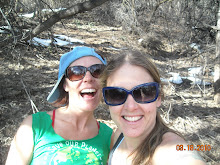Distance: 4.6 miles
Altitude Gained: 880 ft.
High Point: 7480 ft.
north, south, east, and west
circumspectacular views
of where we're livin'
Raider Ridge is our neighborhood mountain; the trailhead is 9 blocks from our house. As FLC alumni, it holds a special place in our hearts as our campus basically sits in its lap. It affords some of the best views of our perfect little river valley home. As you walk along the top of the ridge (also a hogsback, geologically speaking), the perspective changes, revealing how the Animas River left its print in the Earth's surface. Contrary to popular misconception, the Fort Lewis campus is not a mesa, but a river terrace. According to Encyclopedia Brittanica, a river terrace is a "bench or step that extends along the side of a valley and represents a former level of the valley floor."
Raider Ridge is part of the Telegraph Trail system, a gigantic series of lovely trails east of downtown, which from what we can tell, must be mountain bike heaven. We enjoy them plenty on our two feet. At last publication of Hiking Trails, there was no trail connecting back from the north end of the ridge; to get down from the "extended ridge" you had to turn around and go back or bushwhack back down to Horse Gulch. But thanks to a compromise in 2009 between the city, Trails 2000, and property owner and lifetime Durangoan Jake Dalla, you can now make a full loop. (more)
The main trailhead is located on 9th Ave. and East 3rd St. Although technically prohibited, many FLC students charge up the side of it. It is difficult not to do so as the ridge feels as if were part of the campus. The mountain is named for the college's former mascot, the "Raiders" (Pixler notes that at one time the students maintained a giant "R" on the side of it). We stumbled upon some FLC students who couldn't resist the temptation to raid the ridge; we found them sunning themselves on the black dirt like lizards.
Near the south end, Raider Ridge features a sort of sandstone living room, a collaborative effort between nature and man. You can rest your bones after the climb in a number of different chairs and loveseats. We took a moment to consult Pixler and Peel.
The critters in Horse Gulch are dewinterizing in the warm April sun; we were lucky enough to spot many plateau lizards, dance with a California Tortoiseshell, hear the threatening rattle of a pit viper, and track a deadly mountain lion!
The reptiles joined the students out in the sun for some solar heating. The lizards were darting here-and-there under the brush throughout the whole hike. We got two pictures of the lil' Sagebrush lizard (Sceloporus graciosus), who is surprisingly photogenic.

 Ironically,the species highlight of Raider Ridge was not seen, and we were very grateful for the non-sighting! First, we came across some very hairy scat, which clearly belonged to a cat because of the tapered ends. Then, about 20 feet down the trail we stumbled upon some large prints in the mud matching those of a mountain lion (Puma concolor): round, lobed heel pad, toes evenly spread, and lacking claw marks. This is prime real estate for a mountain lion, as they prefer to stalk their prey from trees and high cliffs. These predators are primarily nocturnal and entirely carniverous, preying on hares, raccoons, skunks and deer. They are excellent climbers, extraordinary leapers and will even swim if necessary!
Ironically,the species highlight of Raider Ridge was not seen, and we were very grateful for the non-sighting! First, we came across some very hairy scat, which clearly belonged to a cat because of the tapered ends. Then, about 20 feet down the trail we stumbled upon some large prints in the mud matching those of a mountain lion (Puma concolor): round, lobed heel pad, toes evenly spread, and lacking claw marks. This is prime real estate for a mountain lion, as they prefer to stalk their prey from trees and high cliffs. These predators are primarily nocturnal and entirely carniverous, preying on hares, raccoons, skunks and deer. They are excellent climbers, extraordinary leapers and will even swim if necessary! As we left, a beautiful butterfly flittered and fluttered around our heads until we stopped to let it land at our feet. Unfortunately, our camera's battery had already died and we were unable to get a picture. But we were able to get a great look at this beauty, and we are nearly positive that it was a California Tortoiseshell (Nymphalis californica) or another close relative. Its piano-key wings were distinct and memorable. We borrowed this photo from the Internet.
c. John Sterling (source: http://www.cal.net/)
We adore and HIGHLY recommend Raider Ridge. It is good for a quickish hike or a longer, more leisurely one. A breathtaking place to spend time. We'll be back in the area soon to check out more of the Telegraph system and to keep on tracking our puma :).











